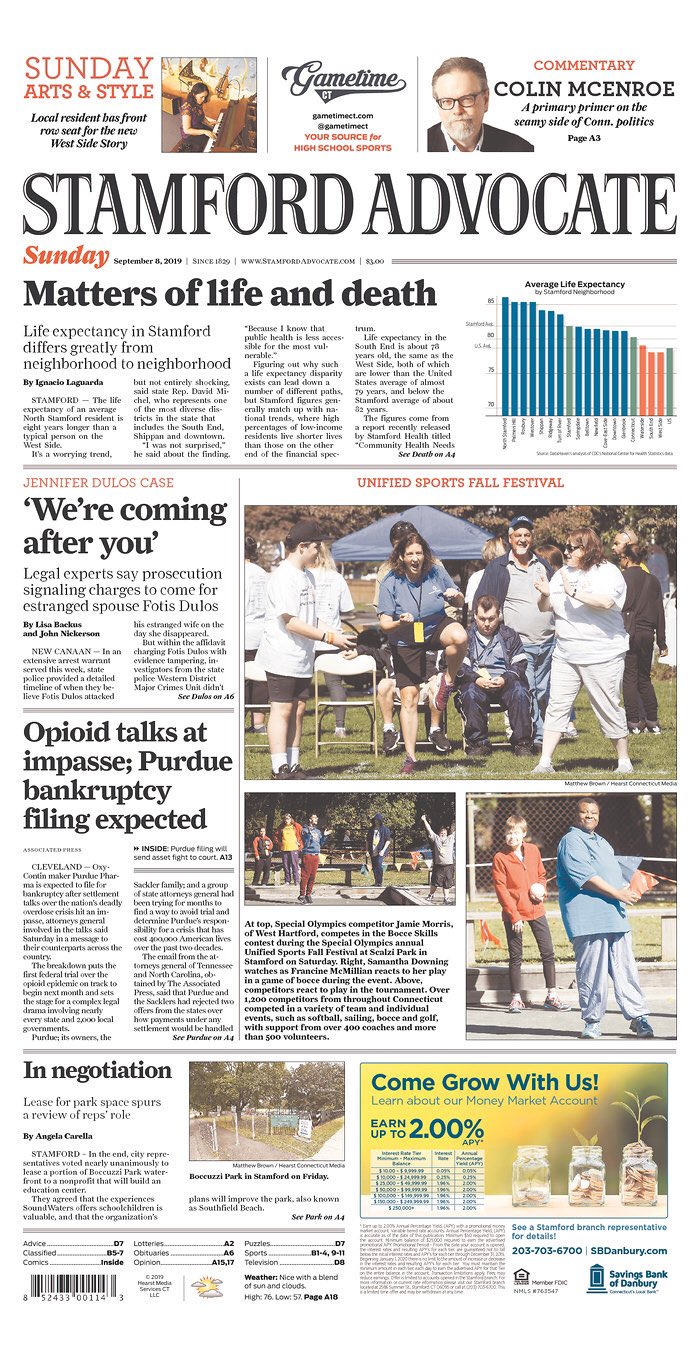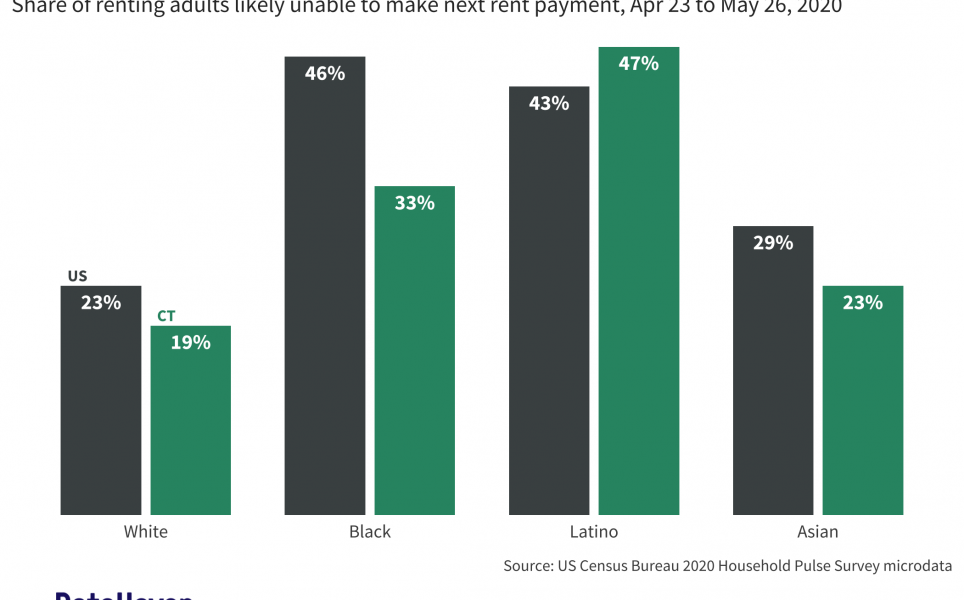[Excerpt from front page article in the Sunday 9/8/2019 Stamford Advocate by Ignacio Laguarda, featuring analysis by DataHaven]
STAMFORD — The life expectancy of an average North Stamford resident is eight years longer than a typical person on the West Side.
It’s a worrying trend, but not entirely shocking, said state Rep. David Michel, who represents one of the most diverse districts in the state that includes the South End, Shippan and downtown.
“I was not surprised,” he said about the finding. “Because I know that public health is less accessible for the most vulnerable.”
Figuring out why such a life expectancy disparity exists can lead down a number of different paths, but Stamford figures generally match up with national trends, where high percentages of low-income residents live shorter lives than those on the other end of the financial spectrum.
Life expectancy in the South End is about 78 years old, the same as the West Side, both of which are lower than the United States average of almost 79 years, and below the Stamford average of about 82 years.
The figures come from a report recently released by Stamford Health titled “Community Health Needs Assessment.” [a special section of the DataHaven Fairfield County Community Wellbeing Index 2019]
Ben Wade, senior vice president of strategy and marketing at Stamford Health, said life expectancy is directly correlated to the income level of a population, as well as what he called the “social determinants of health,” which include housing, food security and employment.
“When those things aren’t stable, it’s hard to say, ‘I’m going to see a doctor,’” he said. “It’s hard to say, ‘I’m going to make sure that I take my pill.’”
The low-income populations in the West Side, Waterside and South End are the largest, by percentage, in the city, and those three neighborhoods also have the lowest average life expectancy in Stamford.
The percentage of low-income residents in those three areas ranges from 43 percent to 49 percent, according to New Haven-based DataHaven.
In comparison, North Stamford has a low-income population of 5 percent.
Because of its size, the West Side has the largest number of low-income residents, 6,521, of which 2,547 live below the poverty line.
[....]
Almost half of the low-income population in Stamford is obese, according to the Community Health Needs Assessment. [Data from 2018 DataHaven Community Wellbeing Survey]
Michel is pushing for more cities to encourage plant-based diets and has had success introducing a meatless Monday program into Stamford Hospital, which has yet to be implemented.
He sees community farms like Fairgate Farm in the West Side as beneficial to the neighborhood and hopes the city goes more in that direction.
Obstacles to quality affordable healthcare as well as the rising cost of living are also major factors in shortening the lives of people living in poverty.
Jeff Stella, a member of the Stamford Board of Representatives who represents part of the West Side, said the character of a neighborhood can take a toll on residents as well.
He said residents in North Stamford don’t feel as if their neighbors are living on top of them, which is much more prevalent in the city’s lower income areas.
“They have green spaces, with kids playing in the backyard,” he said. “They’re not living next to garages and construction companies.”
Further, a person’s financial shape impacts a number of other aspects of their life, he said. For instance, low-income residents often have to find more than one job to get by, cutting down on the amount of free time they have to seek medical treatment or take better care of their bodies.
“When you have to work that hard for that much longer than everyone else, it puts wear and tear on you,” he said.








